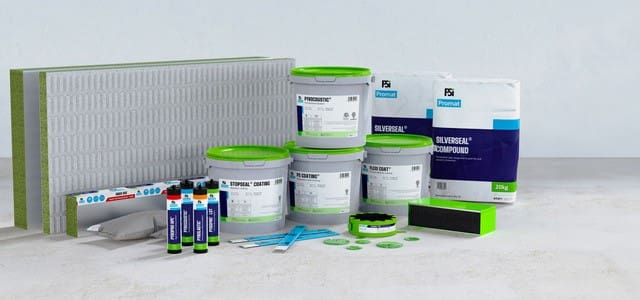FSi Promat has introduced a range of packaging to its core fire-stopping products that use recycled plastic content in sealant packaging without compromising the integrity of its products
Committed to reducing the amount of virgin plastic waste sent to landfills, FSi Promat has sourced packaging with a recycled plastic content of up to 50% for its cartridge products.
In comparison, buckets up to 10 kilograms and the StopSeal Batt film now contain 30% recycled content, too.
This is a significant step in the right direction, as recycled content is still not widely used within the fire protection industry.
In part, robust packaging is still needed to maintain the integrity of products and protect sealant packaging and coatings from water damage.
Boosting recycling in the construction industry
Emma Taylor, marketing manager at FSi Promat, said: “Recycling is a recognised issue in construction, and it is widely accepted that change is needed. Manufacturers must play their role in helping reduce the construction industry’s carbon footprint.
“However, the complex nature of some products means this is not a simple task. Separating sealant and silicone from plastic packaging is a major issue, and research continues to find a viable solution.”
“The one step that we can currently take is to use recycled plastic packaging where possible, but this can only be done where we have reassurances on the stability of the packaging from a product performance point of view – especially when it is a life-critical product like ours.”
“We’re delighted that work with our packaging suppliers has led us to use a more significant proportion of recycled post-consumer recyclate (PCR) plastic and help prevent more virgin plastic from going to landfills.
Sealant packaging helps reduce waste
“Sealant foils are recognised as drastically reducing the waste generated from sealant packaging, and FSi Promat does offer these in our Pyrocoustic and Pyrolastic products. But the slight change in how the product is applied compared to the traditional plastic cartridge has hindered their popularity.”
“It’s vital that we take steps to reduce virgin plastic within our most popular products’ packaging to help our customers reluctant to change their application method.”
Emma concludes: “Whilst we are very pleased to offer this more sustainable packaging, we know the industry still has further to go. We’ll continue to work with our partners to introduce more sustainable solutions wherever possible across the business, balancing this with the need to ensure safety and adequately protect the products to maintain their crucial performance.”

















